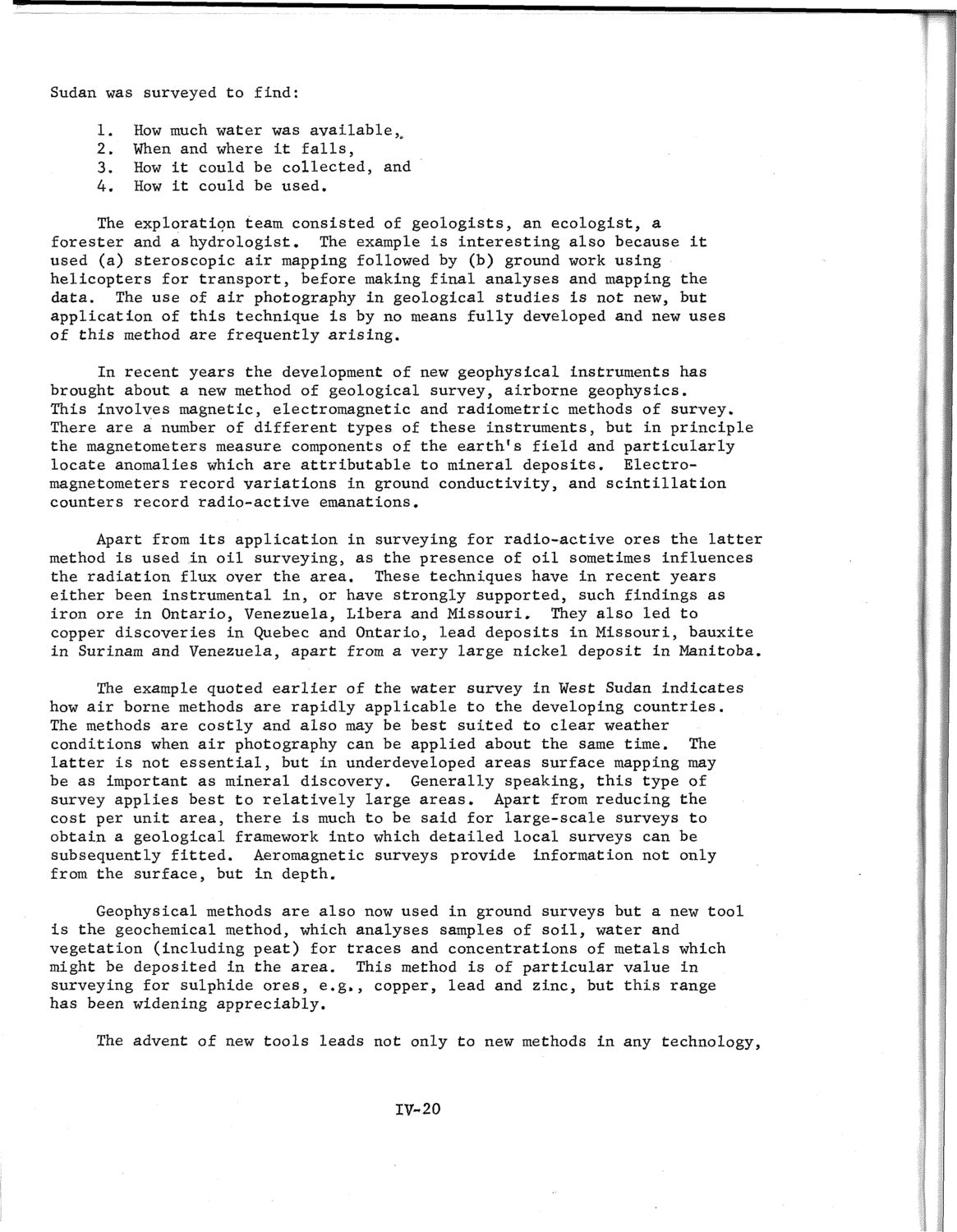| |
| |
Caption: SWE - Proceedings of the First International Conference of Women Engineers and Scientists
This is a reduced-resolution page image for fast online browsing.

EXTRACTED TEXT FROM PAGE:
Sudan was surveyed to find: 1. How much water was available,a 2. When and where it falls, 3. How it could be collected, and 4. How it could be used. The exploration team consisted of geologists, an ecologist, a forester and a hydrologist. The example is interesting also because it used (a) steroscopic air mapping followed by (b) ground work using helicopters for transport, before making final analyses and mapping the data. The use of air photography in geological studies is not new, but application of this technique is by no means fully developed and new uses of this method are frequently arising. In recent years the development of new geophysical instruments has brought about a new method of geological survey, airborne geophysics. This involves magnetic, electromagnetic and radiometric methods of survey. There are a number of different types of these instruments, but in principle the magnetometers measure components of the earth's field and particularly locate anomalies which are attributable to mineral deposits. Electromagnetometers record variations in ground conductivity, and scintillation counters record radio-active emanations. Apart from its application in surveying for radio-active ores the latter method is used in oil surveying, as the presence of oil sometimes influences the radiation flux over the area. These techniques have in recent years either been instrumental in, or have strongly supported, such findings as iron ore in Ontario, Venezuela, Libera and Missouri. They also led to copper discoveries in Quebec and Ontario, lead deposits in Missouri, bauxite in Surinam and Venezuela, apart from a very large nickel deposit in Manitoba. The example quoted earlier of the water survey in West Sudan indicates how air borne methods are rapidly applicable to the developing countries. The methods are costly and also may be best suited to clear weather conditions when air photography can be applied about the same time. The latter is not essential, but in underdeveloped areas surface mapping may be as important as mineral discovery. Generally speaking, this type of survey applies best to relatively large areas. Apart from reducing the cost per unit area, there is much to be said for large-scale surveys to obtain a geological framework into which detailed local surveys can be subsequently fitted. Aeromagnetic surveys provide information not only from the surface, but in depth. Geophysical methods are also now used in ground surveys but a new tool is the geochemical method, which analyses samples of soil, water and vegetation (including peat) for traces and concentrations of metals which might be deposited in the area. This method is of particular value in surveying for sulphide ores, e.g., copper, lead and zinc, but this range has been widening appreciably. The advent of new tools leads not only to new methods in any technology, IV- 20
| |